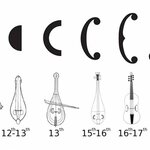Applied Physics

by Marsha Lewis, Inside Science
(Inside Science TV) – Scientists often examine matter that is invisible to the naked eye. This hidden atomic world is a mystery for most people, but now a scientist created a way for people to imagine what they might see as their own bodies interact with the atoms that surround them.
"You're literally being bombarded trillions and trillions of times per second, all over your entire body. Your skin, everywhere, by molecules that make up the air," said David Glowacki, Royal Society Research Fellow jointly based at the University of Bristol, in the U.K. and…

A strong electric field applied to a section of the Keystone pipeline can smooth oil flow and yield significant pump energy savings, found a new study.
The physics basis is to electrically align particles within the crude oil, which reduces viscosity (thickness) and turbulence. Traditionally, pipeline oil is heated over several miles in order to reduce the oil's viscosity, but this requires a large amount of energy and counter-productively increases turbulence within the flow.
In 2006 Rongjia Tao of Temple University in Pennsylvania proposed a more efficient way of improving flow rates…
Thanks to TransGlobal Scientific for the sample serological pipettes used in my article "DIY Titration Lab Ware."
You often see demonstrations of titration using an expensive glass burette, but you can build titration lab ware using a disposable serological pipette, a solder sucker bulb, and a ring stand or support stand. For this build I’m using the tripod stand from the Thames and Kosmos Chem C3000 chemistry set.
Titration is the process of determining the unknown concentration of a solution by adding a known amount of a solution with a known concentration. For example, in an acid-base titration, you can determine the unknown concentration of an acid in a solution by adding a base solution of known…
You can use a simple cat toy (laser pointer) to demonstrate the Tyndall effect. “The Tyndall effect, also known as Tyndall scattering,” according to Wikipedia, “is light scattering by particles in a colloid or particles in a fine suspension.” You can use the laser to test three different mixtures: colloids, suspensions, and solutions. I’ll demonstrate Tyndall scattering in a colloid (milk), in a suspension (dirt), and a solution (sugar) with a cat toy (Laser pointer).
Don’t forget to follow me on Twitter @SteveSchuler20.
Parts needed:
250 ml beaker
Spoon
Eyedropper
Tap water
Cat toy…

What is "Navigated Voltage"?
The short answer to the question "what is navigated voltage?" is that there is no such thing. A slightly longer answer is that the correct term is "induced voltage".
I was searching the web for materials on transmission line electromagnetic fields when I came across the strange term "navigated voltage". I traced the source to Wikimedia where I noted that the image below is described in both English and Russian. The term "наведённого напряжения" on the Wikimedia page seems to have been wrongly translated as "navigated voltage". The correct…
I’ll demonstrate how to build a simple magnetic optical mount for a cat toy (laser pointer). Though it is simple—that is, there aren’t any fine tuning mechanisms one would find on an optical bench—it is, nonetheless, inexpensive and flexible enough to use for simple optical experiments such as demonstrating the Tyndall effect, .
I used a magnetic chip clip to clamp the laser pointer switch (a press switch) in the on position and attach the laser pointer to the Erector set mount. Unfortunately, there are plastic grips on the chip clip that interfere with the smooth rotation of the chip clip…

High-powered microwave devices are designed to transfer energy to targets via ultra-high-frequency radio waves, in civil applications, such as radar and communication systems, heating and current drive of plasmas in fusion devices, and acceleration in high-energy linear colliders.
They can also be used for military purpose in directed-energy weapons or missile guidance systems.
To generate such high-power microwaves, researchers rely on backward wave oscillators, which are designed to transform the energy of an intense electron beam into electromagnetic radiation at microwave…

Gas turbines are used for the production of electricity and in aircraft engines and they are sprayed with a surface coating to increase their lifespan.
The coating consists of two layers, one of metal to protect against oxidation and corrosion, and one ceramic to give thermal insulation. The structure of the coating varies greatly, consisting of pores and cracks of different sizes. It is these cracks and pores that largely determine the efficiency of the thermal insulation and the length of the coating's life-span.
Researchers at University West (Högskolan Väst) have developed methods…

Some of the most prized violins in the world were crafted in the Italian workshops of Amati, Stradivari, and Guarneri in the 17th and 18th centuries. They produced increasingly powerful instruments in the renaissance and baroque musical eras.
This Cremonese period is now considered the golden age of violin-making.
A group of violin makers at the North Bennet Street School in Boston got together with
acousticians and fluid dynamicists at MIT
and analyzed measurements from hundreds of Cremonese-era violins, identifying key design features that contribute to these particular violins'…